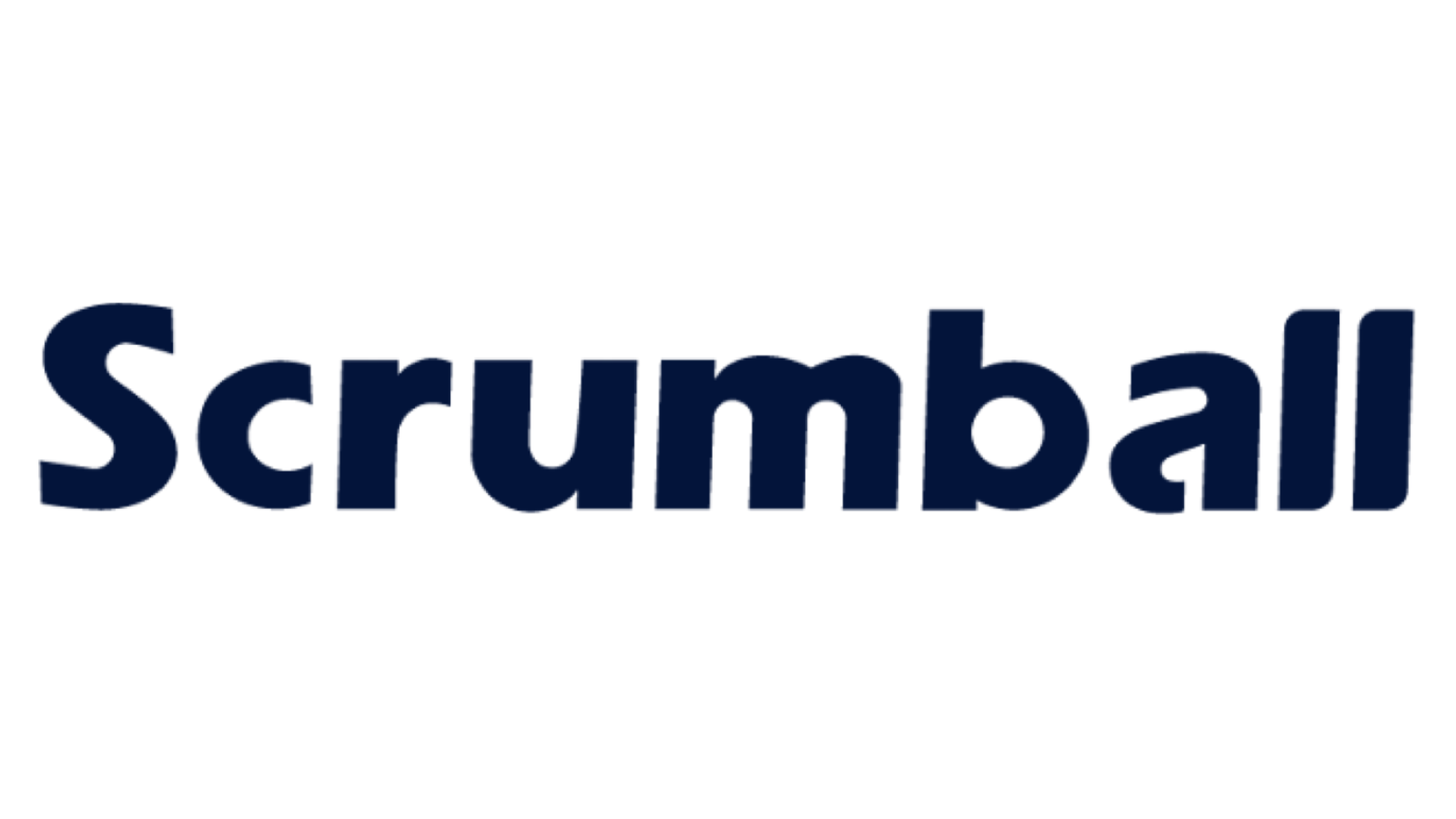Why Businesses Should Combine CRM and Marketing Automation

Imagine a world where your sales and marketing teams work in perfect harmony, sharing insights and driving results together. Combining CRM with marketing automation makes this possible. You gain a unified system that streamlines operations, eliminates manual tasks, and boosts efficiency. Businesses that integrate these tools often see measurable results. For instance:
- Targeted campaigns increase engagement and conversions.
- Automation reduces marketing costs by focusing on the right audience.
- Companies report up to a 40% rise in conversion rates and a 50% improvement in lead generation efficiency.
By integrating marketing automation crm, you unlock the power to deliver personalized experiences, nurture leads effectively, and grow revenue faster.
Understanding CRM and Marketing Automation
What is CRM?
Definition and purpose of CRM systems.
Customer relationship management (CRM) systems help you manage interactions with your customers and prospects. These tools focus on building stronger relationships by organizing customer data, tracking sales activities, and improving communication. Whether you're a small business or a large enterprise, CRM systems provide a centralized hub for managing leads, closing deals, and ensuring customer satisfaction.
Key features of CRM, such as contact management and sales tracking.
CRM systems offer features that simplify your sales processes. Contact management allows you to store and organize customer information, making it easy to access details like email addresses, phone numbers, and past interactions. Sales tracking helps you monitor deals in progress, forecast revenue, and identify opportunities to close more sales. Many CRMs also include automation for lead scoring and pipeline management, saving you time and effort. In fact, 91% of businesses with over 11 employees use CRM systems to improve marketing, sales, and customer service.
What is Marketing Automation?
Definition and purpose of marketing automation tools.
Marketing automation software streamlines repetitive marketing tasks, helping you focus on strategy and creativity. These tools are designed to nurture leads, engage audiences, and drive conversions. By automating processes like email campaigns and social media scheduling, marketing automation allows you to deliver consistent and personalized experiences at scale.
Key features of marketing automation, such as email campaigns and lead nurturing.
Marketing automation tools excel at simplifying complex workflows. For example, you can set up pre-scheduled email sequences to nurture leads over time or use data insights to create personalized content. Other features include social media management, lead scoring, and campaign performance tracking. These tools empower your marketing team to generate leads efficiently and measure the success of their efforts.
| Marketing automation software | CRM software |
|---|---|
| Automates campaigns and marketing tasks | Manages customer interactions to close deals |
| Used by marketing teams | Used by sales teams |
| Streamlines marketing efforts for engagement | Builds customer relationships for satisfaction and loyalty |
| Features include lead nurturing and social media management | Features include contact management and sales pipeline management |
| Automations for scheduling posts and email campaigns | Automations for scoring leads and tracking deals |
| Reports on campaign effectiveness and lead conversion | Reports on sales rep performance and pipeline status |
| Uses AI for personalizing communications | Uses AI for predicting customer behavior and recommending actions |
Why Businesses Need Both Systems
Limitations of using CRM and marketing automation separately.
Using CRM and marketing automation systems independently creates inefficiencies. Without integration, your sales team may lack context about a prospect’s engagement history, while your marketing team might not understand why certain leads fail to convert. This disconnect wastes resources and reduces your ability to deliver a seamless customer experience. Additionally, maintaining consistent and high-quality data across both systems becomes a challenge, leading to ineffective campaigns and missed opportunities.
Challenges in siloed data and communication.
Siloed data and poor communication between sales and marketing teams can harm your business. When teams operate in isolation, they miss out on valuable insights. For instance, marketers may make assumptions about conversion rates without access to sales data, resulting in wasted budgets. Similarly, sales reps might struggle to engage prospects without knowing their previous interactions with your brand. These inefficiencies can frustrate customers, damage your reputation, and ultimately hurt your bottom line.
The Synergy of Marketing Automation CRM Integration

How Integration Works
Data flow between CRM and marketing automation systems.
When you integrate CRM with marketing automation software, the two systems exchange data seamlessly, creating a unified platform. This integration ensures that customer information remains consistent across both tools. For example:
- A unified system improves data hygiene by eliminating duplicate or outdated records.
- Sales and marketing teams communicate more effectively, sharing real-time updates on leads and campaigns.
- Marketing messages become more targeted and impactful, thanks to synchronized data.
Additionally, automated workflows connect the two systems. Actions in the CRM, such as updating a lead’s status, can trigger specific marketing campaigns. Real-time data sharing ensures that your teams always have the latest insights, whether it’s about lead engagement or campaign performance. This streamlined data flow enhances operational efficiency and helps you make better decisions.
Examples of tools and platforms that support integration.
Several platforms make it easy to combine CRM and marketing automation systems. Popular options include:
- HubSpot CRM: An all-in-one solution for marketing, sales, and customer service.
- Pipedrive: A user-friendly CRM with customizable fields.
- Litmus and Constant Contact: Tools for email marketing campaigns.
- Sprout Social and Hootsuite: Platforms for managing social media marketing.
- SimpleTexting and TextMagic: SMS marketing tools for direct communication.
These tools simplify integration, allowing you to focus on strategy rather than technical challenges.
Practical Applications
Automating lead scoring and qualification.
Integration enables you to automate lead scoring, ensuring your sales team focuses on high-quality prospects. For instance, U.S. Bank used Salesforce Einstein to enhance lead scoring, achieving a 260% increase in lead conversion rates. You can assign points based on actions like downloading whitepapers (+15), attending webinars (+25), or requesting a quote (+35). This process ensures that only the most engaged leads move forward, saving time and boosting efficiency.
Synchronizing customer data for personalized marketing.
When your systems share data, you can deliver highly personalized marketing campaigns. By analyzing customer behavior and segmenting your audience, you can create content that resonates with specific needs. Personalized campaigns not only improve engagement but also reduce churn rates. For example:
- Segment your audience based on shared behaviors.
- Deliver targeted content that addresses unique customer needs.
- Build loyalty through consistent, relevant interactions.
This approach enhances the effectiveness of your marketing efforts and strengthens customer relationships.
Tracking customer journeys from lead to conversion.
Integrated systems give you a complete view of the customer journey. You can track every interaction, from the first touchpoint to the final sale. This visibility helps you identify bottlenecks, optimize your processes, and ensure a seamless experience for your customers. By understanding how leads move through your funnel, you can refine your strategies and drive better results.
Pro Tip: Use real-time data from your CRM and marketing automation software to identify trends and adjust your campaigns on the fly.
Benefits of Combining Marketing Automation CRM

Enhanced Team Collaboration
Centralized data for better alignment between sales and marketing.
When your sales and marketing teams share a single source of truth, collaboration becomes seamless. Centralized data ensures both teams work toward the same goals, eliminating confusion and misalignment. For example:
- Aligned teams can achieve up to 32% higher year-over-year revenue growth compared to those operating in silos.
- Marketing can deliver better-qualified leads to sales by agreeing on shared criteria and goals.
- Collaboration maximizes ROI by ensuring both teams’ strategies complement each other.
By integrating CRM and marketing automation software, you create a unified platform that fosters teamwork and drives results.
Real-time updates on customer interactions and campaign performance.
Real-time updates empower your teams to make informed decisions quickly. With instant access to customer data, sales reps can personalize their outreach, while marketers can adjust campaigns based on live feedback.
| Benefit | Description |
|---|---|
| Personalization | Tailored interactions based on customer preferences and history. |
| Performance Monitoring | Track metrics like call activity and conversion rates in real-time. |
| Market Responsiveness | Adapt strategies to current trends and customer feedback. |
This level of responsiveness helps you engage prospects immediately, increasing your chances of conversion and improving overall efficiency.
Shortened Sales Cycles
Faster lead qualification through automated processes.
Automating lead qualification ensures your sales team focuses on high-potential prospects. For instance, assigning scores based on actions like email opens or webinar attendance helps prioritize leads effectively. This process saves time and ensures no opportunity slips through the cracks.
Streamlined handoffs between marketing and sales teams.
Smooth transitions between marketing and sales are critical for maintaining momentum. When your systems work together, only qualified leads move forward, allowing sales reps to concentrate on closing deals. Improved communication and accountability between teams also enhance lead quality. Measuring lead flow and close rates ensures high productivity and conversion efficiency.
Advanced Personalization
Delivering tailored content based on customer behavior.
Personalized content grabs attention and builds trust. By analyzing customer behavior through integrated systems, you can deliver messages that resonate. For example:
- Send abandoned cart emails to remind customers to complete purchases.
- Recommend products based on past purchases or browsing activity.
- Use targeted ads to engage users based on their interests.
These strategies create memorable experiences, fostering loyalty and retention.
Building stronger relationships through consistent communication.
Consistency is key to building lasting relationships. Integrated CRM and marketing automation systems allow you to automate timely follow-ups, personalized emails, and relevant offers. Customers appreciate brands that understand their needs and deliver value consistently. This approach not only strengthens relationships but also boosts long-term engagement.
Pro Tip: Use CRM data to identify customer preferences and automate personalized campaigns that keep your audience engaged.
Increased Efficiency and ROI
Automating time-consuming tasks like data entry and prospecting
Time is one of your most valuable resources. By integrating crm with marketing automation software, you can eliminate many repetitive tasks that drain your team’s productivity. These tools handle mundane activities like data entry, lead nurturing, and follow-ups without requiring manual input. For example, instead of manually updating customer records or tracking interactions, the system does it for you in real time.
Automation also simplifies event and webinar management. Tasks like registration, reminders, and attendee tracking become effortless. This allows your team to focus on strategic initiatives rather than administrative work. The result? You save hours every week while ensuring accuracy and consistency across your processes.
When you automate these time-consuming tasks, your team can dedicate more energy to building relationships and closing deals. This shift not only boosts efficiency but also enhances your ability to scale operations as your business grows.
Higher conversion rates due to aligned strategies
Alignment between your sales and marketing teams is a game-changer. When both teams work together using integrated crm and marketing automation software, they can create strategies that resonate with your audience. This alignment ensures that every piece of content and outreach effort matches where your prospects are in their buyer’s journey.
Consider this: aligning content with the buyer’s journey can lead to a 73% increase in conversion rates.
| Alignment Strategy | Conversion Rate Increase |
|---|---|
| Content alignment on buyer’s journey | 73% higher conversion rates |
By sharing data and insights, your teams can craft personalized campaigns that address specific customer needs. For instance, marketing can deliver highly qualified leads to sales, while sales can provide feedback to refine future campaigns. This synergy not only improves conversion rates but also maximizes the return on your marketing and sales investments.
When your strategies align, you create a seamless experience for your customers. This builds trust, encourages engagement, and ultimately drives more revenue for your business.
How to Implement Marketing Automation CRM Integration
Assess Your Current Systems
Evaluate the capabilities of your existing CRM and marketing tools.
Before diving into integration, you need to assess your current systems. Start by evaluating the strengths and weaknesses of your CRM and marketing tools. Look for features like integration capabilities, scalability, and user-friendliness. A CRM that integrates seamlessly with other software enhances efficiency and reduces errors. Customization options and scalability ensure your tools can grow with your business.
| Factor | Description |
|---|---|
| Integration capabilities | A good CRM should integrate seamlessly with existing software, enhancing efficiency and accuracy. |
| Customization and scalability | The CRM must offer customization options and be scalable to accommodate future growth without disruptions. |
| Data security and compliance | Strong security features and adherence to data protection regulations are crucial for building customer trust. |
| Reporting and analytics | Comprehensive reporting features and customizable dashboards are essential for monitoring performance and making data-driven decisions. |
| User-friendliness | A simple interface and easy navigation are vital for user adoption and productivity. |
| Availability of training | Comprehensive training resources and customer support options are necessary for effective onboarding and utilization of the CRM tool. |
| Mobile accessibility | Mobile access to CRM functionalities is important for real-time collaboration and productivity, especially in remote work settings. |
| Cost and ROI | Evaluating long-term value beyond initial costs is essential for understanding the overall return on investment. |
By identifying these factors, you can pinpoint gaps and areas for improvement, ensuring your systems are ready for integration.
Identify gaps and areas for improvement.
Once you’ve evaluated your tools, identify where they fall short. Are your CRM and marketing platforms struggling to share data? Do they lack automation features or scalability? Addressing these gaps will help you choose the right integration solution and avoid future roadblocks.
Choose the Right Tools
Research platforms that support seamless integration.
Selecting the right tools is critical for a smooth integration process. Look for platforms that offer broad connectivity and compatibility with your existing systems. For example, HubSpot CRM provides an all-in-one solution with email tracking and lead scoring, while Zoho CRM offers extensive customization at an affordable price. Salesforce Essentials and Pipedrive are also excellent options for businesses seeking scalability and ease of use.
- HubSpot CRM: Free plan available; paid plans start at $50/month.
- Zoho CRM: Starts at $14/user/month, making it very affordable.
- Salesforce Essentials: Starts at $25/user/month, balancing features and affordability.
- Pipedrive: Starts at $14.90/user/month for the Essential plan.
These platforms simplify integration, allowing you to focus on strategy rather than technical challenges.
Consider scalability and ease of use.
Your chosen tools should grow with your business. Scalability ensures your systems can handle increasing data volumes and user loads. Ease of use is equally important. A user-friendly interface encourages adoption and minimizes training time. Prioritize tools that balance these features with robust security and compliance measures.
Train and Align Teams
Provide training on using integrated systems effectively.
Training your team is essential for maximizing the benefits of integration. Start by assessing their training needs. Cover topics like basic navigation, data entry best practices, and role-specific workflows. Use interactive workshops and real-world examples to make learning engaging. Incorporate role-playing exercises to help your team understand how to use the integrated system in their daily tasks.
Pro Tip: Set clear deadlines and offer incentives to encourage participation. This approach boosts engagement and ensures your team is ready to hit the ground running.
Foster collaboration between sales and marketing teams.
Integration works best when sales and marketing teams collaborate effectively. Align their strategies from the start to ensure campaigns address customer pain points. Break down silos by implementing unified data management tools. Encourage open communication and shared goals to create a cohesive team. When both teams understand each other’s processes, they can work together to drive better results.
Monitor and Optimize
Track performance metrics to measure success.
To ensure your CRM and marketing automation integration delivers results, you need to track the right performance metrics. These metrics provide a clear picture of what’s working and where improvements are needed. Focus on the following key indicators:
- Lead conversion rate
- Customer acquisition cost (CAC)
- Marketing qualified leads (MQLs) and sales qualified leads (SQLs)
- Customer lifetime value (CLV)
- Customer retention rate
- Campaign ROI
- Sales cycle length
- Lead response time
By monitoring these metrics, you can identify trends and measure the impact of your strategies. For example, a high customer retention rate signals strong engagement, while a low lead conversion rate may indicate gaps in your sales funnel. Use these insights to make data-driven decisions that maximize your return on investment.
Pro Tip: Set up automated dashboards in your CRM to track these metrics in real time. This saves time and ensures you always have up-to-date information at your fingertips.
Continuously refine processes based on data insights.
Data insights are your most powerful tool for refining your processes. When you analyze performance metrics, you uncover opportunities to optimize workflows and improve outcomes. Businesses like Coca-Cola have used integrated systems to enhance customer engagement and make faster decisions. Similarly, platforms like Twistle by Health Catalyst have streamlined communication processes, reducing costs and improving results.
You can apply these lessons to your own operations. For instance:
- Adjust your lead scoring criteria to better reflect customer behavior.
- Refine email campaigns based on open rates and click-through data.
- Optimize your sales pipeline by identifying and addressing bottlenecks.
Every adjustment you make based on data insights brings you closer to achieving your goals. Regularly review your metrics and test new strategies to stay ahead of the competition.
Action Step: Schedule monthly reviews with your sales and marketing teams to discuss performance data and brainstorm improvements. This keeps everyone aligned and focused on continuous growth.
Integrating CRM with marketing automation crm transforms how you engage customers and grow your business. This synergy enhances efficiency, streamlines workflows, and delivers personalized experiences that foster loyalty. For example, companies like Unilever and British Airways have achieved remarkable results, from reducing costs to boosting customer retention.
The long-term benefits are undeniable:
- Improved customer engagement through tailored campaigns.
- Streamlined workflows that free up time for strategic initiatives.
- Unified data insights that drive smarter decisions.
- Higher ROI from targeted, high-converting campaigns.
| Benefit Type | Description |
|---|---|
| Improved Customer Engagement | Personalized content enhances customer satisfaction and loyalty. |
| Streamlined Workflows | Automation reduces manual tasks, increasing team productivity. |
| Better Data Insights | Unified data enables accurate analytics and trend identification. |
| Increased ROI | Targeted strategies maximize revenue and reduce marketing costs. |
To unlock these advantages, start by evaluating your current systems and selecting tools that support seamless integration. Train your teams, foster collaboration, and implement strong security protocols to ensure success. Businesses that embrace this integration position themselves for sustained growth and a competitive edge in their industry.
Pro Tip: Develop a step-by-step implementation plan and assign clear roles to ensure accountability and smooth execution.
FAQ
What is the main benefit of integrating CRM and marketing automation?
Integration creates a seamless connection between sales and marketing. You get a unified view of customer data, enabling personalized campaigns, faster lead qualification, and improved collaboration. This synergy boosts efficiency and drives higher ROI.
How does integration improve lead management?
Integrated systems automate lead scoring and qualification. You can prioritize high-quality leads based on engagement data. This ensures your sales team focuses on prospects most likely to convert, saving time and increasing productivity.
Do I need technical expertise to integrate these tools?
Most platforms offer user-friendly interfaces and pre-built integrations. You don’t need advanced technical skills. Many tools, like HubSpot or Salesforce, provide step-by-step guides and customer support to simplify the process.
Can small businesses benefit from this integration?
Absolutely! Small businesses can streamline operations, reduce manual tasks, and deliver personalized experiences. Affordable tools like Zoho CRM or Pipedrive make integration accessible, helping you compete with larger companies.
How do I measure the success of integration?
Track metrics like lead conversion rates, customer retention, and campaign ROI. Use dashboards in your CRM to monitor performance in real time. Regularly review data insights to refine strategies and maximize results.
Pro Tip: Start small. Test integration with a few workflows before scaling up to ensure smooth implementation.
See Also
The Importance Of Sponsored Posts For Business Expansion
Exploring Product Seeding Techniques In Today's Marketing
Maximizing UGC Impact In Your Marketing Approach
